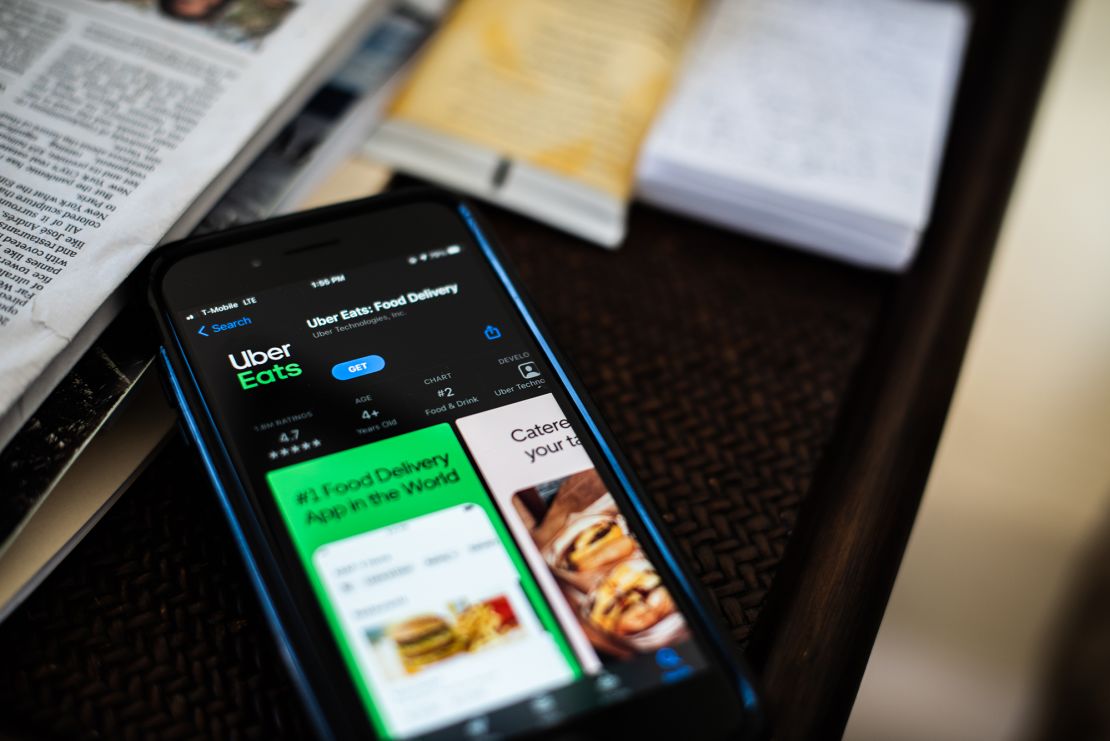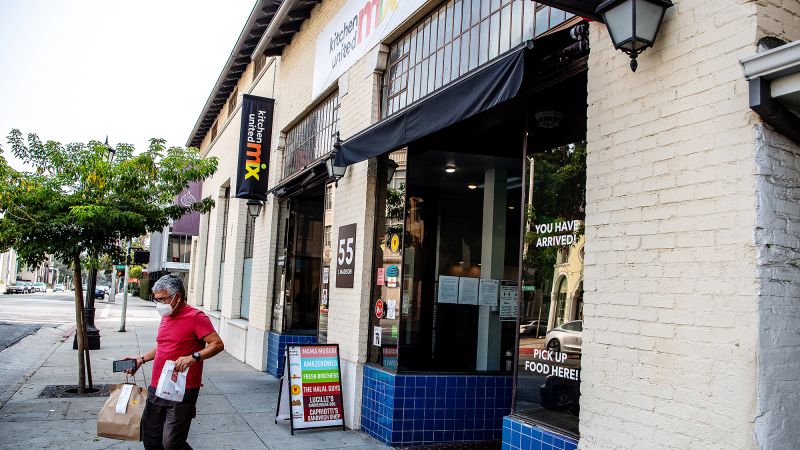Big investors, celebrity chefs and chains rushed to open ghost kitchens during the pandemic, and they were expected to make up more than 20% of the restaurant industry by 2025. But ghost kitchens are now crashing.
Last week, Kitchen United, which raised $175 million in funding and was backed by Kroger, announced it would sell or close all of its locations. The startup ran delivery-only restaurants from inside Kroger stores, malls, and even from inside chain restaurants, sharing cooking space.
Ghost kitchens are stripped-down commercial kitchens with no dine-in option. Sometimes called cloud kitchens, dark kitchens or virtual kitchens, ghost kitchens fulfill online orders from delivery apps like Grubhub and Uber Eats. Several dozen menus can come out of the same ghost kitchen, and customers often don’t know they’re not ordering from a restaurant with a real, physical location.
Ghost kitchens have been around for years, but they boomed during the pandemic. They were seen as a salvation for the restaurant industry during the height of the pandemic, and they expanded as dine-in restaurants closed and online ordering became the primary option for customers. More than 70,000 restaurants permanently closed due to the pandemic.
Many restaurant owners and investors bet ghost kitchens were a cheaper way to start or grow their business than sit-down dining rooms. Ghost kitchens also offered big chains a way to test new menu concepts, items and brands at lower rents and with less labor.
“Coming out of the pandemic, a boatload of restaurants closed. There was a lot of vacant restaurant real estate, especially in cities. There was hope that this valuable real estate could be put to use,” said John Gordon, a restaurant consultant. “Chains wanted to bring in new products in cost-effective fashion.”
Wendy’s released plans in 2021 to open 700 ghost kitchens with startup Reef Technology. CloudKitchens, a ghost kitchen startup started by Uber co-founder Travis Kalanick, bought more than 40 properties in two dozen cities for $130 million. Applebee’s launched Cosmic Wings, which served Cheeto-flavored chicken wings.
It turns out the ghost kitchen concept puzzled many customers, who could not find the restaurants on a map, drop by in person to see where their food was prepared, or report problems with their orders. Some customers felt “fooled” and “catfished” when they learned that they ordered from what they thought was a small restaurant that instead turned out to be a big chain using ghost kitchen techniques.
As people began returning to restaurants, the “mystery meal world of virtual restaurants wasn’t as necessary,” said Stephen Zagor, a restaurant industry consultant and adjunct professor at Columbia Business School. “We care a lot about what my restaurant is about, and how fresh and delicious the food is.”
While people are happy to order off delivery apps, they want to eat from restaurants — not technology companies they don’t recognize selling food, he said.
People have returned to eating at restaurants in person and ordering at drive-thru, and delivery growth has stalled from its pandemic heights. Additionally, many consumers are pulling back on meal delivery because of higher prices and delivery fees.
Transparency and quality issues have also been a major problem for ghost kitchens.
Consumers prefer ordering from brick-and-mortar restaurants, the National Restaurant Association found in a survey this year, with 70% of diners saying it’s important for their food to come from a publicly accessible, physical location.
“There was no identity or marketing behind the ghost kitchens. Consequently, the sales were too low,” John Gordon said.
The business side of running a ghost kitchen has also been challenging. Ghost kitchens rely on third-party delivery companies to deliver orders. Third-party providers charge fees, which can be as high as 30%.
Local health departments have struggled to inspect and regulate ghost kitchens, too.

And the online delivery market is saturated. Uber Eats this year cracked down on ghost kitchens, removing thousands of listings that were crowding the site.
So restaurants have shut down their ghost kitchens and funding for the concept has dried up.
Wendy’s abandoned its ghost kitchen plans earlier this year, Applebee’s folded up Cosmic Wings, and Kalanick’s CloudKitchens laid off its staff this fall. Butler Hospitality, which operated ghost kitchens for the hotel industry, also shut down.
It’s the most recent example of how businesses that boomed during the pandemic, like Zoom, Peloton and Instacart, have faltered as consumers return to old habits.
“It was a pandemic buzz,” Gordon said.
Read the full article here




